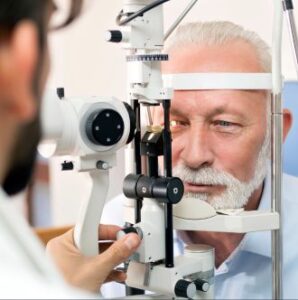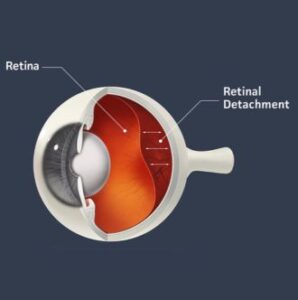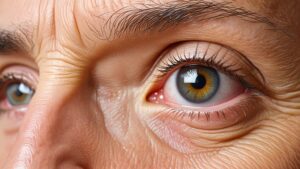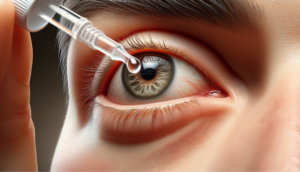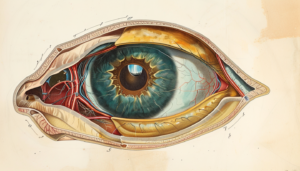Our brains and eyes are highly concentrated with Omega-3 fatty acids, where they start to accumulate even before we are born, during fetal development. Diets rich in Omega-3 fatty acids have been associated with reduced risk of death from coronary heart disease mortality, slowing of age-related cognitive decline, and a decreased risk of developing late-stage age-related macular degeneration
Essential Fatty Acids Support Key Functions
The right kinds of fat in our diets are good for us, and necessary because they provide an important source of energy. Fatty acids are commonly classified as saturated, monounsaturated, and polyunsaturated fats. The essential fatty acids are a component of fat molecules. Polyunsaturated fatty acids (PUFAs) contain at least two double bonds of atoms in their molecules, and if the first double bond is located 6 carbon atoms from the end, it is an Omega-6 or ω6, and when the first double bond is 3 carbon atoms away it is an Omega-3 or ω3.
Omega-3 and Omega-6 are two types of essential fatty acids in nature, and they are vital for supporting key functioning of our cardiovascular, reproductive, immune, and nervous systems. These essential fatty acids are also key to brain and sensory organ (like our eyes) development and maturity. The reason Omega fatty acids are called “essential” is because that is the term used to describe something that is needed by our bodies to function, but that we must get from our diets or supplementation, as our body is not able to produce or synthesize them.
Our brains and eyes are highly concentrated with Omega-3 fatty acids, where they start to accumulate even before we are born, during fetal development. [5] Diets rich in Omega-3 fatty acids have been associated with reduced risk of death from coronary heart disease mortality, slowing of age-related cognitive decline, and a decreased risk of developing late-stage age-related macular degeneration. [11, 12, 3]
Three Types Of Omega-3 Fatty Acids
There are three Omega-3 fatty acids, alpha-linolenic acid (ALA), docosahexaenoic acid (DHA) and eicosapentaenoic acid (EPA). DHA and EPA are instrumental in retinal development and visual function and they work very closely with each other. The retina is a structure on the back inside surface of the eye, made up of thin layers of light-sensitive cells (photoreceptors, rods, cones). These cells transmit nerve impulses through the optic nerve to the brain, where a visual image is formed. This transmission of light is how we see. DHA is most highly concentrated in the retina and is key to carrying out important retinal photoreceptor functions, and EPA is vital to the production of DHA within the body.
EPA and DHA are mainly found in cold-water fatty fish, like tuna, salmon, sardines, and mackerel and also seaweed, while ALA is from non-fish sources like grass fed beef, eggs, seeds, nuts and leafy greens. EPA and DHA are mainly found in cold-water fatty fish, like tuna, salmon, sardines, and mackerel.
What do Omega-3 Fatty Acids do for our eyes?
Omega-3 fatty acids can provide benefits to the structural components of the eye, they can protect parts of the eye from degenerative damage and they can also provide anti-inflammatory benefits.
Before we are born, the Omega-3 intake of our mothers’ is essential for our brain and eye (neurological and visual) development. Omega-3s are also used to produce breast milk. There have been reports that in utero the developing infant, and later the production of breast milk for the baby, can deplete a mother of her own Omega-3s, further compounded with each additional pregnancy. Research has established that the addition of Omega-3 fatty acids, EPA and DHA, to the diet of pregnant women has a positive effect on visual and cognitive development of the baby.

Support Retina Photoreceptors For Night Vision
Two important photoreceptors in the layers of the retina are the rods and the cones. We have more than 100 million rods that are responsible for low light vision (night vision). The 6-million cones are more active at higher light, and also have a role in color vision. In order to function their best, the cell membranes of the rods and cones need Omega-3 fatty acids, specifically DHA.
In most tissues in our bodies, DHA is only present in 1-5%, but it accounts for more than 50% fatty acid content of rod outer segments. This means that the DHA concentrated in the retina helps to renew the outer segments of some photoreceptors and synthesize new membranes. [6] Studies have shown that the efficiency of visual signaling was dependent on the amount of Omega-3 (DHA) that was present in the rod outer segment membranes. [7]
Omega-3s Vital To Regulate and Balance Inflammation
Ongoing (chronic) inflammation has been shown to play a role in the development of many common, degenerative and potentially devastating eye conditions like macular degeneration and diabetic retinopathy. Studies have shown that Omega-3 fatty acids play a key role in the body’s ability to regulate and balance inflammation.
EPA and DHA play an important role in regulating the signaling of molecules and hormone receptors implicated in inflammation, abnormal retinal neovascularization, vascular permeability (leakage), leading to edema (excess fluid), all of which are dangerous hallmarks of retinal disease. Population-based studies have shown that people who have a regular intake of Omega-3 in their diets halved their risk of developing the wet (neovascular) form of age-related macular degeneration. [1]
Over the 12 years that participants were followed in the landmark AREDS study (The Age-Related Eye Disease Study, conducted by the National Eye Institute), those that reported the highest intake of Omega-3 fatty acids in their diets, were 30% less likely to develop central geographic atrophy or wet age-related macular degeneration. [9]
When the follow-up AREDS2 study investigated if Omega-3 supplementation would have an additional benefit in reducing progression of macular degeneration, they did not find a significant benefit over 5 years. This result was surprising and some have speculated that many of the participants included may have had the socioeconomic means to meet their dietary intake of Omega-3, so the additional supplementation provided limited benefit.
What happens to our eyes if we don’t get enough Omega-3 fatty acids?
Low levels of Omega-3 fatty acids (deficiency) have been associated with many eye disorders and degenerative diseases. Studies in pre-term and full-term infants suggest that getting enough Omega-3 fatty acids in the diet is essential for optimal visual development (eye and optic nerve development).
A number of studies have also shown that animals not getting enough DHA in their diets suffer visual impairment and degradation of the retina. Human studies have also shown that low levels of DHA and EPA have been associated with diabetic retinopathy, age-related macular degeneration (AMD) and retinopathy of prematurity. Dry eye syndrome also has been linked to Omega-3 deficiency.
Reviews of studies in the medical literature have noted that Omega-3 fatty acid deprivation may predispose individuals to ocular disease later in life. [1]
How can I be sure I’m getting enough Omega-3 Fatty Acids?
Knowing how much Omega-3 you need can be confusing, especially because published recommendations can be different. The World Health Organization (WHO) recommends 0.3–0.5 g/day, while the Food and Drug Administration (FDA) and the American Heart Association recommend a regular intake of 0.9–1.0 g/day for cardiovascular benefits. [8]
It is possible to have an intake of Omega-3 fatty acids that is too high. High doses of Omega-3 can be harmful and may lead to increased bleeding risk, increased low-density lipoprotein (LDL) cholesterol, and blood sugar control problems. A 1999 study showed that maximum dose of EPA plus DHA that can be tolerated is 300 mg/kg of body weight per day. This works out to be 22g/day for a 150 lb person, the approximate amount found in 10 cups of sardines.
Eye Supplements To Help Reach Recommended Omega-3 Levels
Sometimes it can be a challenge to ensure we are getting everything we need from our diets, so taking a daily supplement can be a good choice. It is important to carefully read product labels to confirm that the supplement is of the highest quality, from a reputable company, and contains appropriate nutrient amounts and no unwanted ingredients such as dyes or fillers.
When taken as directed on the package instructions, most Omega-3 supplements have few side effects and are generally safe, but it is always important to check with your physician, especially for people that have any other health concerns or are taking other medication.
Do all Omega-3 supplements contain fish oil?
No, for individuals who prefer not to consume fish, DHA is commercially manufactured from microalgae and is an excellent source of Omega-3. Supplements containing Omega-3 algal oil, sustainably sourced from algae, is a vegan source of essential fatty acids in one of the purest forms. Omega-3 from algae eliminates any concerns related to environmental pollutants such as mercury, dioxins and industrial chemicals such as polychlorinated biphenyls (PCBs) that have been associated with consumption of fish products. Algae is the original source of Omega-3 consumed by fish, but free of potential chemical and other contaminants that accumulate in fish over their lifetime. Omega-3 algae oil supplements are available and can also include antioxidants, shown to support good eye health.
Are Omega-3 Fatty Acids helpful for reducing pressure inside the eye?
Elevated pressure inside the eye (intraocular pressure) can lead to an increased risk of glaucoma, a sight-threatening disease that can damage the optic nerve. A recent study conducted in Australia showed that participants that had normal eye pressure, and took a daily Omega-3 supplement, significantly reduced their eye pressure. [2] Further study is being done to determine if there may be a clinical benefit for people with increased eye pressure or glaucoma.
Are Omega-3 Fatty Acids helpful for Dry Eye?
Omega-3 fatty acids appear to improve the lipid layer on the surface of the eye, which helps the eye stay lubricated and tears evaporate more slowly. Normally lipids are delivered to the eye surface by small glands at the edge of the eyelids, called meibomian glands.

Omega-3 fatty acids appear to improve the lipid layer on the surface of the eye, which helps the eye stay lubricated and tears evaporate more slowly.
Many Ophthalmologists and Optometrists have noted clinical improvement in their patients with dry eye disease that have started taking Omega-3 supplements. Eye Care professionals commonly recommend Omega supplements for dry eye symptom relief.
The Research agrees. In a 2019 meta-analysis of 17 randomized clinical trials (3363 people with dry eye disease) reported that supplementation with Omega-3 fatty acid significantly improved dry eye signs and symptoms. The researchers concluded that these findings indicate that Omega-3 fatty acid supplementation may be an effective treatment for dry eye disease. [4]
References:
[1] Augood C, Chakravarthy U, Young I, Vioque J, de Jong PT, Bentham G, Rahu M, Seland J, Soubrane G, Tomazzoli L, Topouzis F, Vingerling JR, Fletcher AE. Oily fish consumption, dietary docosahexaenoic acid and eicosapentaenoic acid intakes, and associations with neovascular age-related macular degeneration.Am J Clin Nutr. 2008 Aug;88(2):398-406. https://www.ncbi.nlm.nih.gov/pubmed/18689376
[2] Downie LE, Vingrys AJ. Oral Omega-3 Supplementation Lowers Intraocular Pressure in Normotensive Adults. Transl Vis Sci Technol. 2018 May 1;7(3):1. https://www.ncbi.nlm.nih.gov/pubmed/29736322
[3] Fotuhi M, Mohassel P, Yaffe K. Fish consumption, long-chain omega-3 fatty acids and risk of cognitive decline or Alzheimer disease: a complex association. Nat Clin Pract Neurol. 2009; 5: 140– 152. https://www.ncbi.nlm.nih.gov/pubmed/19262590
[4] Giannaccare G, Pellegrini M, Sebastiani S, Bernabei F, Roda M, Taroni L, Versura P, Campos EC. Efficacy of Omega-3 Fatty Acid Supplementation for Treatment of Dry Eye Disease: A Meta-Analysis of Randomized Clinical Trials. Cornea. 2019 Jan 29. https://www.ncbi.nlm.nih.gov/pubmed/30702470
[5] Hodge W, Barnes D, Schachter H, Pan Y, Lowcock E, Zhang L, Sampson M, Morrison A, Tran K, Miguelez M, Lewin G. Effects of Omega-3 Fatty Acids on Eye Health. Evidence Report/Technology Assessment No. 117 (Prepared by University of Ottawa Evidence-based Practice Center under Contract No. 290-02-0021.) AHRQ Publication No. 05-E008-2. Rockville, MD: Agency for Healthcare Research and Quality. July 2005. https://www.ncbi.nlm.nih.gov/pmc/articles/PMC4780934/
[6] Huber T, Rajamoorthi K, Kurze VF, Beyer K, Brown MF. Structure of docosahexaenoic acid-containing phospholipid bilayers as studied by (2)H NMR and molecular dynamics simulations. J Am Chem Soc. 2002 Jan 16; 124(2):298-309. https://www.ncbi.nlm.nih.gov/pubmed/11782182
[7] Niu SL, Mitchell DC, Lim SY, Wen ZM, Kim HY, Salem N Jr, Litman BJ. Reduced G protein-coupled signaling efficiency in retinal rod outer segments in response to n-3 fatty acid deficiency. J Biol Chem 2004;279:31098-104. https://www.ncbi.nlm.nih.gov/pubmed/15145938
[8] Querques G, Forte R, Souied EH. Retina and Omega-3. J Nutr Metab. 2011;2011:748361. https://www.ncbi.nlm.nih.gov/pubmed/22175009
[9] SanGiovanni JP, Agron E, Meleth AD, Reed GF, Sperduto RD, Clemons TE, et al. ω-3 Long-chain polyunsaturated fatty acid intake and 12-y incidence of neovascular age-related macular degeneration and central geographic atrophy: AREDS report 30, a prospective cohort study from the Age-Related Eye Disease Study. Am J Clin Nutr 2009;90:1601-7. https://www.ncbi.nlm.nih.gov/pubmed/19812176
[10] SanGiovanni JP, Chew EY. The role of Omega-3 long-chain polyunsaturated fatty acids in health and disease of the retina. Prog Retin Eye Res. 2005 Jan; 24(1):87-138. https://www.ncbi.nlm.nih.gov/pubmed/15555528
[11] Seddon JM, Rosner B, Sperduto RD,et al. Dietary fat and risk for advanced age-related macular degeneration. Arch Ophthalmol. 2001; 119: 1191– 1199. https://www.ncbi.nlm.nih.gov/pubmed/11483088
[12] Whelton SP, He J, Whelton PK, Muntner P. Meta-analysis of observational studies on fish intake and coronary heart disease. Am J Cardiol. 2004; 93: 1119– 1123. https://www.ncbi.nlm.nih.gov/pubmed/15110203

